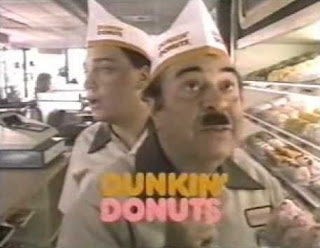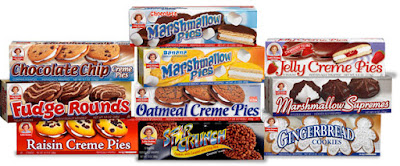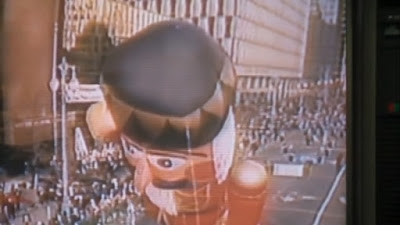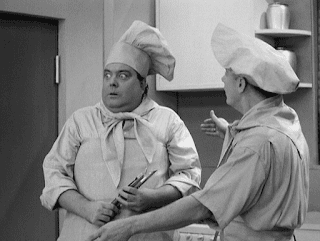Click here to read Tim's, but only after finishing this one, of course!
My job takes me away from my family and home, sometimes for days. That time away comes and goes in peaks and valleys; lately, I feel like I've spent more time away than at home. But it's how I make my living, and we've gotten used to it as best we can.
Such may be the career I've chosen, but the time away from home means I have a lot of downtime to sit and ponder things. Sitting around airports or hotels, I frequently watch footage of old television commercials on YouTube. These commercials help transport me to a time and place I look back on fondly.
My last article, about Nobody Beats the Wiz, was a treat to write. It was one of those things I've been meaning to get to for a long time, and I'm glad to do it finally. I'll admit it was a very long piece, and the writing and research took quite a long time. However, it was enjoyable digging into the history of such a beloved brand of yesteryear that I remember so fondly.
As I said, it was pretty long, so if you got through it, thank you!
Since moving and working in New England, I can't help but notice something different. When we lived on Long Island in New York, I couldn't turn around without tripping over a 7-11. The town we lived in had four alone in 12 square miles.
In New England, though, I don't think I've seen a 7-11. What I find every three feet is the bright orange and pink signs for Dunkin' Donuts, or as it's now called, Dunkin'. While America may run on Dunkin' (as the slogan goes), this area wouldn't survive without the caffeine and sugar from the beloved hometown orange brand.
I'm not much of a coffee drinker, but I don't have to be an aficionado to know that there's a grudge match for your coffee-spending dollar. Marketing gurus even title the term "The Coffee War." Seriously, look it up on Wikipedia.
Fascinating stuff, the battle of the brands, but coffee is a very lucrative market. As a limited coffee drinker, I won't comment about taste or specialty drinks. Still, I can honestly say that Dunkin' just smells a heck of a lot better.
For most people, scents and smells are often the strongest triggers of memories. I can still be taken back to the Dunkin' Donuts of my childhood when I walk into one today. They still smell the same to me. My Mom would stop into the lone Dunkin' in town a few times a year to buy a box of Munchkins for class to hand out on my birthday, as was the tradition in my elementary school. You're probably not allowed to do that anymore, though. Oh, what kid's miss out on today.
Speaking of the smell of coffee, does anyone else remember when grocery stores had a proper coffee aisle? I don't mean the canned grounds or the boxes of K-Cups, but when they had a stack of clear bins full of various coffee beans that you could scoop into a bag for yourself? The smell of those coffee beans permeated a 50-foot radius with such wonderful aromas that, even as a young child, would cause me to want to linger while Mom shopped. Excellent stuff, those memories.
Today's article isn't so much about coffee or donuts but more about the history of Dunkin' Donuts. Dunkin' launched an ad campaign in 1981 that is still remembered by many adults today. Like any good ad from YesterYear, this one launched a catchphrase that became synonymous with its brand. The slogan became a part of pop culture and has entered the cultural lexicon as an everyday phrase anyone can use or understand.
"It's Time To Make The Donuts," so let's read all about Dunkin Donuts, Fred the Baker, and how America began to "run on Dunkin'!"
William "Bill" Rosenberg is the man responsible for what we know today as Dunkin'. Rosenberg was an interesting fellow who grew up in Depression-Era Boston. He dropped out of the 8th grade when his family's grocery store went out of business so that he could help his family raise money. Bill shined shoes on street corners, shoveled snow, and delivered the paper. One day, he made a small fortune when he bought huge blocks of ice and turned them into ice chips to sell at a local racetrack. In one day selling those chips, he earned $171, which in today's money would equate to a whopping $2,996! In one day! During the Great Depression!
Following World War II, he borrowed $1000 and used $1500 worth of war bonds to open Industrial Luncheon Services. Industrial Luncheon Services sold sandwiches, coffee, donuts, and snacks out of the back of old telephone company trucks that he converted into what is now the modern concept of a food truck. He had great success parking his food truck near construction sites, guaranteeing that most workers would be hungry enough to buy his food.
His food truck's best sellers were coffee and donuts, so he decided that would be the next direction for his entrepreneurial endeavors. Rosenberg then opened a coffee shop in Quincy, Massachusetts, in 1948 that he called The Open Kettle.
Quincy, you may remember from this article I wrote last year, was also home to the very first Howard Johnson's restaurant. Rosenberg introduced 52 donuts - one for every week of the year - to combat the typical three or four choices at most grocery stores and bakeries. At first, donuts cost 5 cents, and "premium" coffee cost 10 cents per cup.
In 1950, after only two years, Mr. Rosenberg changed the company's name from Open Kettle to Dunkin' Donuts. The official Dunkin' website claims the name was changed "after a brainstorming session." Still, company folklore claims Rosenberg was never happy with Open Kettle. The claim is that Rosenberg changed the name one day after watching several customers "dunk" their donuts into their coffee, and the Dunkin' Donuts brand was born.
Dunkin' was successful right from the beginning, and the company opened six more locations within five years.
In 1955, franchising was seen as an unproven business practice, but Rosenberg saw it as a brilliant template allowing rapid growth. According to his biography at the University of New Hampshire's Rosenberg International Franchise Center, William initially went into business with his brother-in-law, Harry Winouker. In time, the two had a falling out over franchising, and they split the company. Rosenberg kept Dunkin' Donuts, while Winouker changed his stores to the Mister Donut name. Many years later, Dunkin' would purchase Mister Donut and merge them back together.
The "Time to make the Donuts" tagline has become part of our lexicon, which is nearly impossible to do on purpose. America just fell in love with Fred. Fred the Baker reminded us that not only did Dunkin' create 52 varieties of donuts day and night, and that this is something that other stores wouldn't do. The other, oft-forgotten tagline and the internal namesake of the entire campaign was (that Dunkin' is) "worth the trip."
Viewers quickly saw themselves in Fred. In some form or fashion, they saw themselves getting out of bed every day for work, not knowing if they were coming or going. In a time where we all say we want to slow down to "enjoy the moment," the truth is life seems to be going faster and faster. We "make the donuts" every day, just like Fred did.
"Fred the Baker" quickly joined the list of legendary advertising icons, like the Maytag Repairman or Clara "Where's the Beef?" Peller. Or, for you young folks, think of "Jake from State Farm" or "Flo from Progressive."
Michael Vale portrayed the character for over 15 years, from 1981 to 1997, as one of television's longest-lasting spokesmen. When Vale decided to retire, Dunkin' Donuts began asking customers how they'd feel without Fred the Baker. Fans requested the brand let the character bow out with dignity, so the company threw a parade in Boston for the actor and gave away 6 million free donuts in his honor.
Dunkin' Donuts was acquired in 1990 by the holding company Allied Lyons, owner of Baskin Robbins'. After being acquired, Dunkin purchased rival donut and coffee shops, Dawn Donuts and Mister Donut. By buying these two competitors, Dunkin' expanded rapidly through the 1990s. By 1998, the brand had grown to 2,500 locations worldwide with $2 billion in annual sales.
In December 2005, Dunkin' Brands (the newly renamed holding company for Dunkin' Donuts and Baskin-Robbins) was sold to a private equity consortium for $2.4 billion.
By 2010, Dunkin' Donuts' global sales were $6 billion.
In June 2013, Dunkin' Donuts turned down a campaign created by fans online to revive the famous commercial featuring the "time to make the donuts" tagline. Chief Financial Officer at the time, Paul Carbone, said that the perpetually tired baker would "not be coming back." He noted the chain's focus has shifted to beverages. He called beverages, like coffee and iced drinks, the "holy grail" of profitability, and a commercial focused on donuts would be counterintuitive.
In September of 2018, at the Global Franchise convention in Canton, Massachusetts, Dunkin' Donuts announced that it was making a significant change in branding by shortening its name to simply "Dunkin'." The new brand was introduced in January 2019, and many customers were pleased to find the color kept the color scheme of pink and orange, along with the same style logo font. The only thing different was the missing word "Donuts," again emphasizing the company's change in focus from baked goods to beverages.
In 2020, Dunkin' Brands disclosed that it was in conversation with Inspire Brands to sell the company. Inspire Brands is a holding company that owns Arby's, Jimmy John's, Buffalo Wild Wings, and Sonic Drive-In.
On October 31, 2020, Inspire Brands announced that they would acquire the Dunkin' Brands Group for $11.3 billion.
Dunkin', Baskin-Robbins, and Mister Donut operate as part of Inspire Brands today.
While Dunkin' Donuts and Fred the baker may have once risen early to "make the donuts," that is not the case any longer for the company. According to current and former employees, Dunkin' locations no longer make donuts in the store. As of January 2022, the company now ships frozen donuts to some locations. Most donuts are made daily at central bakeries - and then delivered to each store - it's hard to say they are as good as they once were
Dunkin' is still the top retailer of donuts in America, with $2.9 billion in sales annually. Since the rebranding to Dunkin', the company has installed an eight-headed tap system for cold beverages and increased an emphasis on mobile orders. Today the company has over 12,900 locations in 42 different countries and is one of the largest coffee chains in the world.
7,300 locations (of the 12,900) are in the United States alone. Recently, company executives have stated that breakfast sandwiches and drinks have profit margins of over 75 percent. The fact that donuts weren't included in the profit statement makes one assume they aren't very profitable, nor important, to the company any longer.
Forty years after the first commercial aired, the phrase is still deeply ingrained in pop culture. Many a morning, my coworkers and I use the term "time to make the donuts" before we start for the day. Some of the younger ones were barely born when the campaign ended, yet they know what the phrase means and where it comes from.
Many of us can relate to Fred, doing the same thing every day. However, most of us often need to remember the ending of the commercials and the true meaning behind the phrase. As tired as he is, Fred will always turn and face his customers with a warm smile. He's proud of his work and happy to serve.
It's a life lesson, really. Just show up consistently, put in the effort, and follow through, and you'll be ahead of the game.
Well done, Fred.









.png)




Comments